Table of Contents
ToggleIn a world where expenses can sneak up like a cat on a laser pointer, mastering an expense sorting routine is essential. It’s not just about balancing the books; it’s about reclaiming control over your financial chaos. Imagine transforming your scattered receipts into a well-organized symphony of numbers, where every dollar has its place and purpose.
Overview of Expense Sorting Routine
An expense sorting routine streamlines financial management. This routine involves categorizing expenses to provide clarity. First, individuals should gather all financial documents, including receipts and bank statements. Categorizing these items helps in understanding spending patterns.
Next, establishing categories enhances financial insight. Common categories include essentials like groceries, utilities, and transportation, as well as discretionary spending such as entertainment and dining out. Implementing specific categories aids in identifying areas for potential savings.
Frequency of this sorting process matters for effective management. Regularly sorting expenses can prevent financial chaos. Weekly or monthly routines enable individuals to track spending in real-time. Those who maintain consistent sorting habits report lower financial stress.
Technology facilitates this routine. Budgeting apps and software allow users to input expenses easily. Automation features can categorize expenses for users automatically. Many individuals find these tools beneficial in maintaining organization.
Additionally, reviewing expenses against a budget provides a comprehensive overview. Comparing actual spending to budgeted amounts highlights discrepancies. This practice fosters accountability and promotes healthy financial habits.
Tracking expenses visually, through charts or graphs, further clarifies financial situations. Visualization techniques can amplify the understanding of spending habits. Many find that improvement in expense awareness leads to informed decision-making.
An organized expense sorting routine not only simplifies bookkeeping but also empowers individuals financially. Prioritizing methodical categorization ensures clearer perspectives on managing finances effectively.
Importance of an Effective Expense Sorting Routine
Establishing an effective expense sorting routine significantly aids in personal finance management. It enhances clarity and control over financial situations.
Benefits for Personal Finance Management
Organizing expenses allows individuals to quickly identify spending patterns. Recognizing these patterns enables more informed financial decisions. Categorizing expenses into essentials and discretionary items highlights areas where spending can be adjusted. Streamlining this process reduces the stress associated with financial management. Increased organization leads to greater accountability, promoting healthy financial habits. Tools and technology further simplify this routine, making tracking expenses easier and more efficient.
Impact on Budgeting and Saving
A well-structured expense sorting routine directly impacts budgeting strategies. Individuals can compare actual spending against budgeted amounts to identify discrepancies. This analysis fosters awareness and promotes better spending choices. Saving opportunities become apparent through categorization, allowing for targeted adjustments. Visualization of expenses through charts offers insights that support informed financial planning. Increased awareness and clear expense tracking encourage disciplined saving habits, ultimately contributing to long-term financial stability.
Steps to Create an Expense Sorting Routine
Creating an expense sorting routine involves a few key steps to ensure effective financial management.
Identifying Your Expenses
Start by collecting all financial documents. Gather receipts, bank statements, and payment confirmations. This compilation provides a complete picture of spending habits. Expenses vary; some common examples include groceries, utilities, entertainment, and savings. Understanding these expenditures highlights overall spending patterns. Identify fixed expenses like rent and variable expenses such as dining out. Recognizing these categories forms the foundation of a solid expense sorting routine.
Categorizing Expenses
Once expenses are identified, categorize them for clarity. Create groups based on spending types, such as essentials and discretionary costs. Essentials might include groceries, housing, and transportation, while discretionary expenses could cover entertainment and luxury items. By categorizing expenses, individuals can quickly assess where money is going. This insight helps uncover potential areas for savings. Prioritize categories that impact the budget most significantly to make informed financial decisions.
Tracking and Recording Expenses
Tracking and recording expenses reinforces accountability. Use spreadsheets, apps, or financial software for accurate tracking. Update these records regularly, whether daily or weekly, to maintain an organized system. Consistent tracking prevents overspending and encourages savings. Individuals can compare recorded expenses against their budget, identifying discrepancies easily. Tools that automate recording simplify this process, allowing for smoother financial management. Staying diligent about tracking leads to healthier spending habits.
Tools and Resources for Expense Sorting
Finding the right tools and resources enhances the effectiveness of an expense sorting routine. Various options exist to streamline financial management.
Digital Tools and Apps
Numerous digital tools simplify expense sorting. Budgeting apps like Mint and YNAB (You Need A Budget) automate expense categorization, allowing users to track spending effortlessly. Many of these apps offer features such as alerts for overspending and visual reports for better insight into finances. Cloud-based software, like QuickBooks, facilitates easy access to financial data from multiple devices. Users can also link bank accounts for real-time updates. Integrating these tools into a regular routine can effectively reduce manual tracking while supporting informed financial decisions.
Manual Methods and Worksheets
Manual methods remain valuable for those preferring hands-on approaches. Using worksheets, individuals can categorize expenses clearly with printed templates or Excel spreadsheets. Creating sections for fixed and variable expenses encourages better understanding of spending habits. Many find that manually inputting each expense promotes accountability and enhances familiarity with their financial situation. Regularly reviewing these worksheets helps in identifying trends and potential savings. Incorporating physical envelopes for different categories offers a tangible method for managing discretionary spending. This personalized approach empowers individuals to gain control over their finances.
Common Challenges in Expense Sorting
Expense sorting routines face several common challenges that can hinder effectiveness. Identifying and addressing these obstacles helps individuals maintain control over their finances.
Overcoming Procrastination
Procrastination often disrupts consistent expense sorting. Individuals may feel overwhelmed by the amount of paperwork involved. Setting specific times for sorting can alleviate this pressure. Breaking tasks into smaller, manageable steps enhances focus. Utilizing reminders or calendar alerts keeps sorting sessions top of mind. Keeping a visible checklist of tasks builds momentum and fosters accountability. The sense of accomplishment gained from completing even small tasks encourages continued progress.
Staying Consistent with Your Routine
Consistency plays a crucial role in maintaining an effective expense sorting routine. Establishing a regular schedule for sorting creates positive habits. Weekly or monthly sessions prevent financial chaos and minimize stress. Finding a suitable time, such as Sunday afternoons, makes sorting a normal part of the routine. Additionally, employing digital tools can simplify the process. Automated reminders through budgeting software ensure timely updates and prevent delays. Regularly reviewing expenses provides insight into spending patterns and keeps financial goals in focus.
Establishing an expense sorting routine is essential for anyone looking to take control of their finances. By organizing expenses into clear categories individuals can gain valuable insights into their spending habits. Regularly sorting through financial documents not only reduces stress but also fosters accountability and encourages healthier financial practices.
Utilizing technology and setting a consistent schedule can make this process even more manageable. With the right tools in place individuals can visualize their expenses and make informed decisions that lead to long-term financial stability. Embracing this routine transforms financial chaos into clarity empowering individuals to achieve their financial goals.





